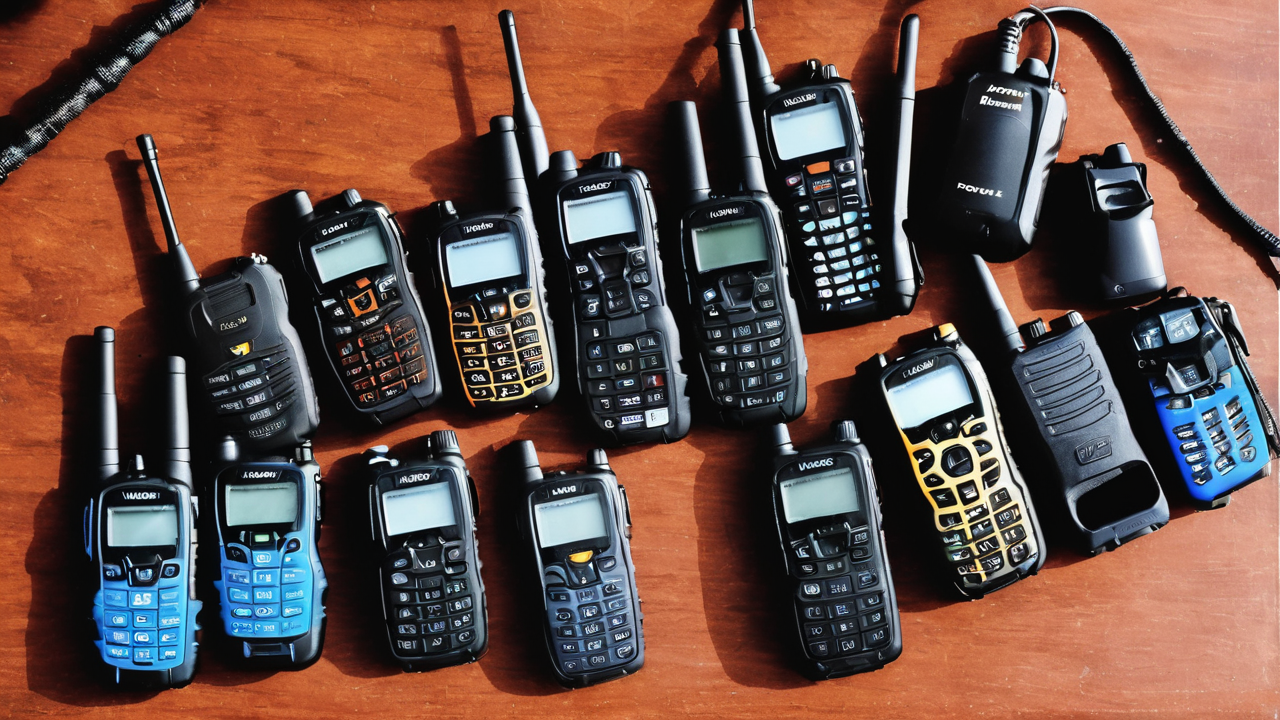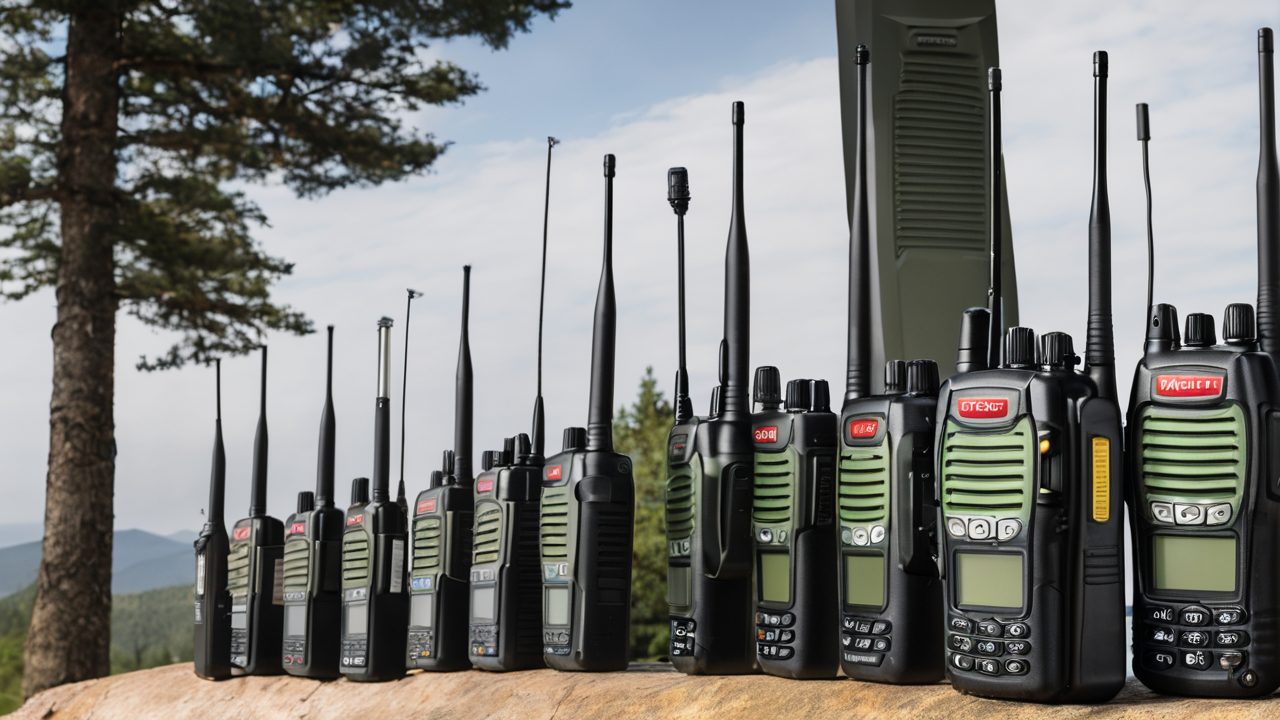The Top Walkie Talkies: A Buyer's Guide
Understanding the Importance of Reliable Communication
In today's fast-paced world, reliable communication is crucial. Walkie talkies offer instant, direct contact in various settings. They're vital for businesses, outdoor activities, and emergencies. Good walkie talkies ensure clear messages in noisy environments. They work where cell phones fail, making them essential for remote areas. Reliable communication can save time, boost efficiency, and even save lives. When choosing walkie talkies, consider your specific needs. Think about where you'll use them and how often. The right choice can make a big difference in your operations.

Key Features to Look for in Walkie Talkies
When shopping for walkie talkies, certain features stand out:
- Range: How far the signal reaches
- Battery life: How long it lasts on a single charge
- Durability: Can it withstand drops and harsh weather?
- Sound quality: Clear audio is crucial
- Channels: More channels mean less interference
- Privacy codes: For secure communication
- Size and weight: Consider portability
- Water resistance: Important for outdoor use
- Extra features: Like hands-free operation or GPS
Look for models that balance these features with your needs and budget. Remember, the best walkie talkie is the one that fits your specific requirements.
The Best Walkie Talkies in the United States
Several walkie talkie models stand out in the U.S. market:
- Motorola T600: Great for outdoor use, water-resistant
- Midland GXT1000VP4: Long range, clear audio
- BaoFeng BF-F8HP: Powerful, with many features
- Cobra CXT1035R FLT: Floating design, good for water activities
- Retevis RT21: Compact, ideal for business use
Each model has its strengths. The Motorola T600 is perfect for rugged outdoor use. The Midland GXT1000VP4 offers impressive range. BaoFeng BF-F8HP is feature-rich but may require a license. Cobra CXT1035R FLT is great for water sports. Retevis RT21 is compact and suitable for daily business use. Choose based on your specific needs and usage scenarios.
Exploring the Technical Specifications of Walkie Talkies
Decoding the Technical Jargon: What Does 'Range' Really Mean?
Range is a key spec for walkie talkies, but it can be misleading. Manufacturers often list the maximum range under ideal conditions. In reality, the effective range is usually much less. Factors like terrain, buildings, and weather affect range. For example, a "30-mile range" might only be 2-3 miles in urban areas. Hills, trees, and concrete walls can reduce range. To get a realistic idea of range, look for user reviews. They often provide real-world experiences. Remember, clear line of sight gives the best range. In practical use, expect about 1/3 of the advertised range in most conditions.

Battery Life and Durability: How to Assess Quality
Battery life and durability are crucial for reliable walkie talkies. Look for models with long battery life, ideally 8-12 hours of use. Rechargeable batteries are convenient but consider models that can use standard batteries too. This is useful for long trips or emergencies. For durability, check the IP rating. IP67 or IP68 ratings indicate good water and dust resistance. Look for models with rugged construction. Military-grade standards (MIL-STD) indicate high durability. Read user reviews to see how devices hold up over time. Consider the warranty as well. A longer warranty often indicates the manufacturer's confidence in their product's durability.
Channels and Frequencies: A Primer for Walkie Talkie Users
Channels and frequencies are key to understanding walkie talkie operation. Most consumer walkie talkies use the Family Radio Service (FRS) or General Mobile Radio Service (GMRS) bands. FRS is license-free, while GMRS requires a license. More channels mean less chance of interference. Look for walkie talkies with at least 22 channels. Privacy codes provide additional channel options. They don't make conversations private, but they reduce interference. UHF frequencies (400-512 MHz) are best for urban areas. They penetrate buildings better. VHF frequencies (130-174 MHz) work well for open areas. Some models offer both UHF and VHF, providing more versatility.
Strategies for Choosing the Best Walkie Talkies for Your Business
Evaluating Cost vs. Quality for Bulk Purchases
When buying walkie talkies in bulk for business, balance cost and quality. Cheaper models might seem attractive but can lead to higher long-term costs. Consider the total cost of ownership. This includes initial purchase, batteries, and potential replacements. Higher quality models often last longer and perform better. They may have better range and clearer audio. This can improve efficiency and reduce frustration. Look for bulk discounts from reputable brands. Compare warranty terms. A longer warranty can offset higher upfront costs. Consider leasing options for high-end models. This can provide access to better technology with predictable costs. Remember, reliable communication can boost productivity, potentially justifying higher initial investment.

Implementing Walkie Talkies in Various Industries
Walkie talkies find use in many industries, each with unique needs:
- Construction: Rugged, loud environments need durable, clear-audio models
- Hospitality: Compact, discreet units work best
- Security: Long range and privacy features are crucial
- Retail: Lightweight, long battery life models suit long shifts
- Events: Easy-to-use models with good range for coordination
- Healthcare: Models with clear audio and easy sanitization
- Warehousing: Durable units with good indoor range
Choose models that match your industry's specific requirements. Consider the work environment, shift length, and communication needs. Some industries may need special features like man-down alerts or explosion-proof designs. Consult with employees to understand their needs and preferences.
Maintenance and User Training: Ensuring Longevity and Efficiency
Proper maintenance and training are key to getting the most from your walkie talkies. Develop a maintenance schedule. This should include regular cleaning and battery checks. Train users on proper charging habits to extend battery life. Teach correct usage techniques, like speaking clearly and using the right distance from the mic. Conduct periodic signal checks to ensure all units are working well. Create a clear protocol for reporting issues or damage. This helps address problems quickly. Provide user manuals and quick reference guides. Regular training sessions can refresh skills and introduce new features. Proper care and use can significantly extend the life of your walkie talkies. It also ensures clear communication, boosting overall efficiency.


